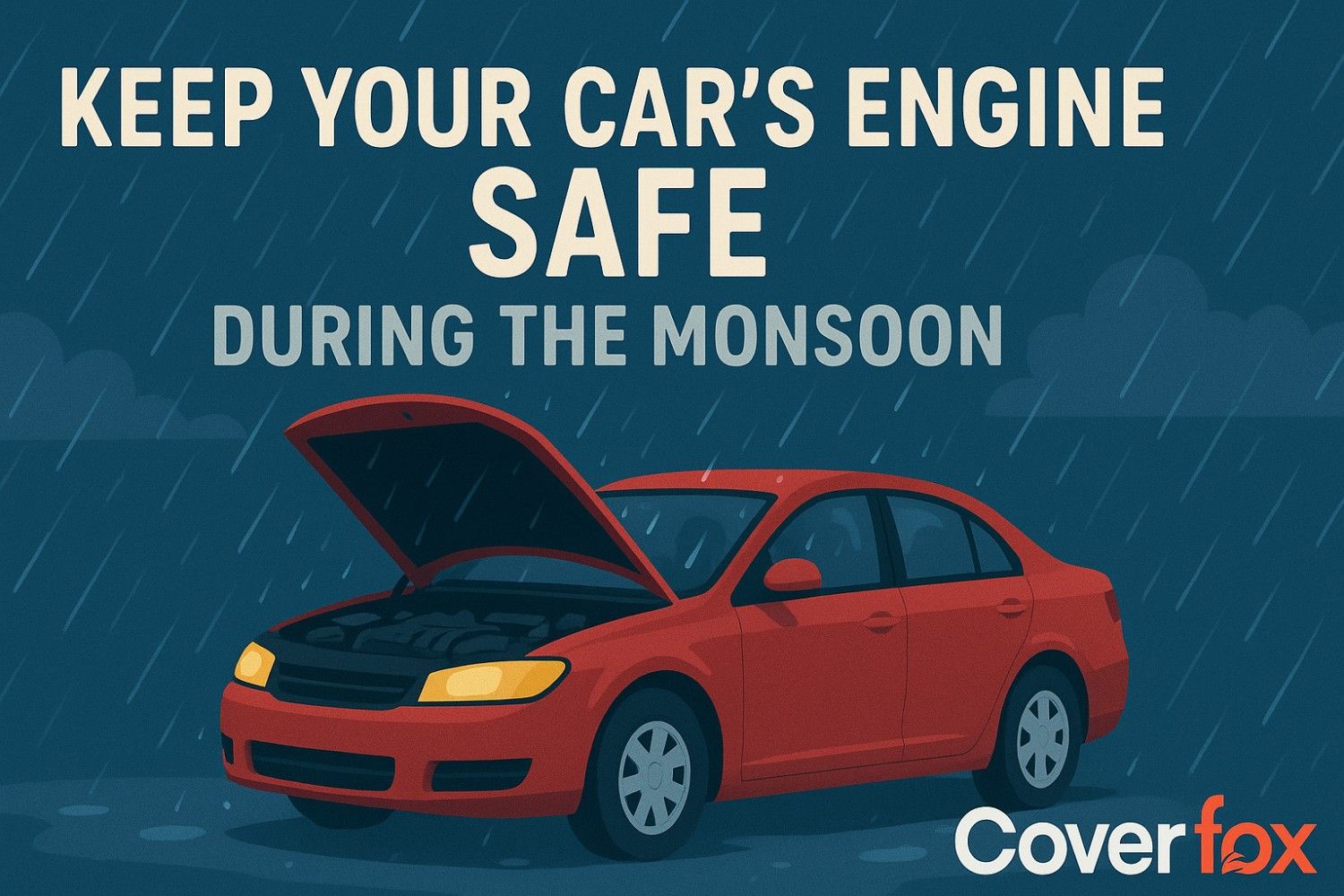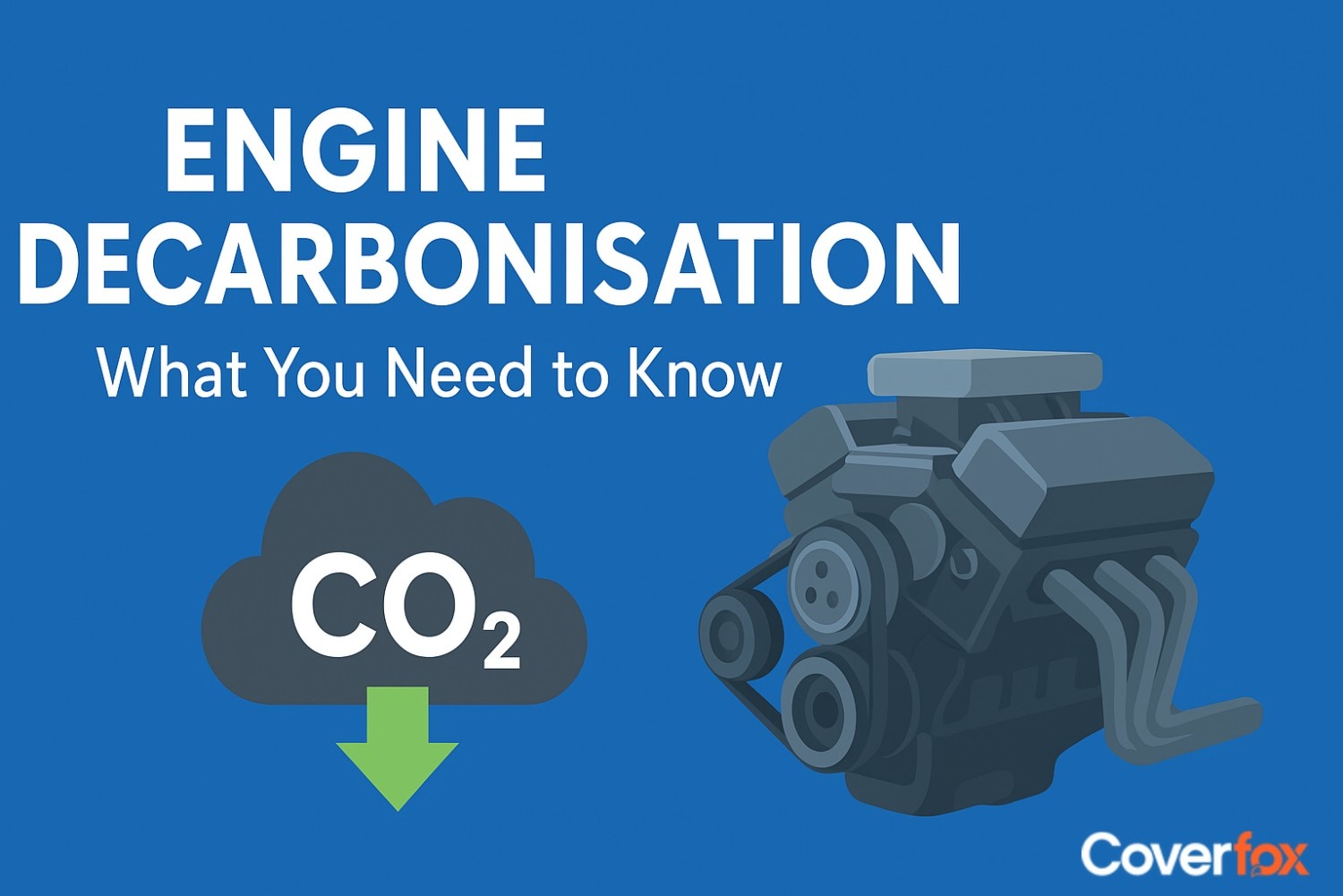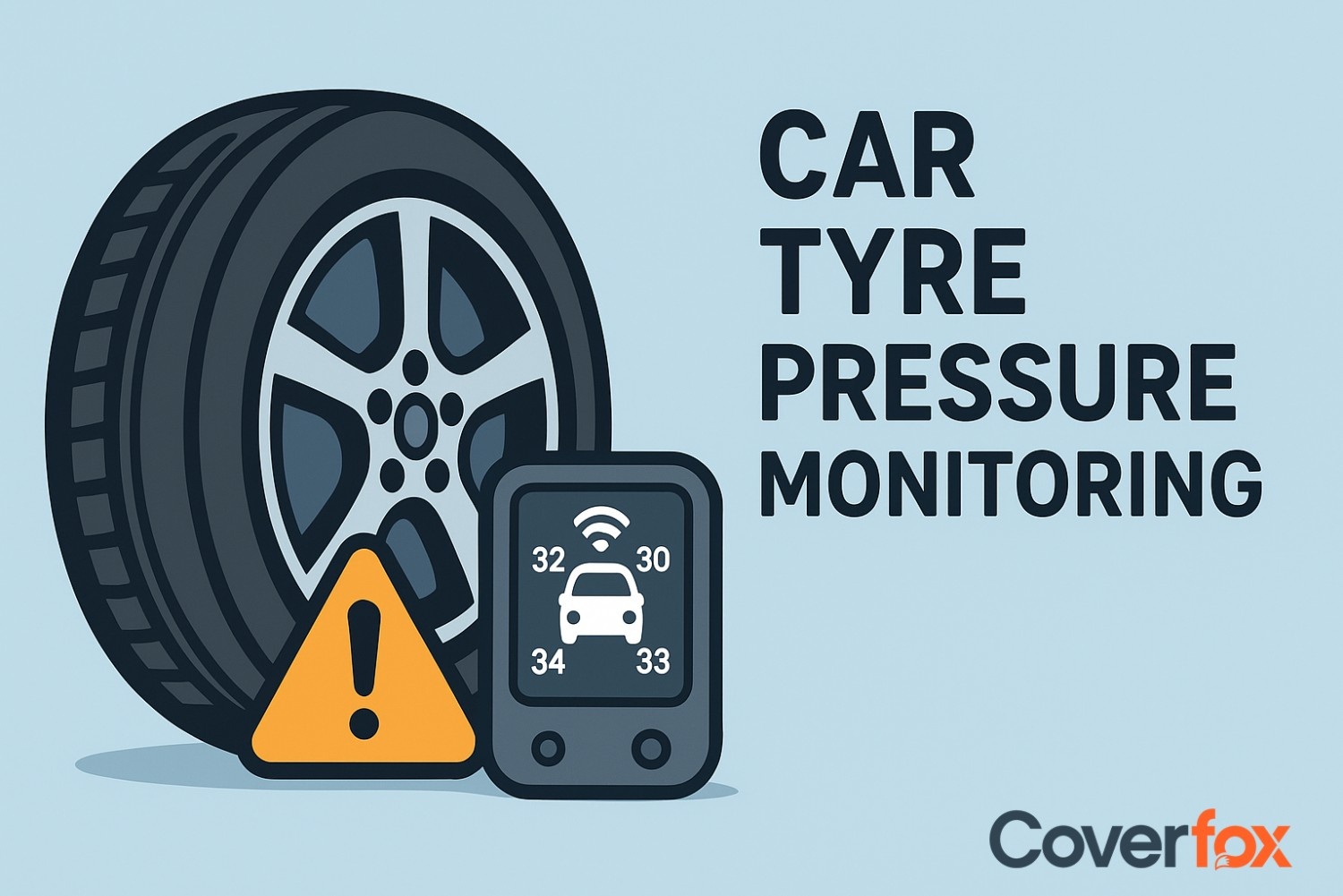Monsoon transforms normal days into peaceful phases of calm, filled with raindrops, soothing wet soil aroma, and streets gleaming like mirrors. This charm masks the struggle of slippery roads, waterlogging, and sudden breakdowns, which test both patience and vehicles. No doubt, the season feels magical, but it’s also a time when your car’s engine faces its hardest challenges.

Usually, rains compromise the safety of you and your vehicle, so protecting it is a high priority. Having the right car insurance can save you from a sudden financial burden, especially in such unexpected situations.
Common Risks of Monsoon on Your Car's Engine
Waterlogging, dampness, and moisture in rain can easily affect the most important parts of your car, like the engine. Some of the common damages that can affect your car’s engine in the monsoon are:
1. Hydrostatic Lock
If water enters the engine cylinders through the air intake, it can cause severe damage to the engine or shut it down.
2. Electrical Failures
Moisture and dampness in the air lead to disruption of the car’s electrical systems, which can further impact the ignition and engine performance.
3. Contaminated Fuel
Rainwater can enter the fuel tank and dilute the fuel, reducing engine efficiency.
4. Corrosion of Engine Parts
High humidity, constant dampness lead to the corrosion of the critical components of the car, and they get damaged quickly.
5. Overheating Issues
Due to mud during rain, cooling systems get easily blocked or damaged, which can overheat the engine.
Key Engine Parts to Protect in the Rainy Season
You may feel the rain refreshing and soothing, but it acts differently on your vehicles and often puts your car’s engine at risk. Therefore, by protecting certain vital components ensure smooth performance and avoid financial breakdowns. Shielding these parts can help you protect your engine as well as your vehicle:
Spark Plugs & Ignition System
Battery & Wiring
Fuel System
Engine Oil & Filters
Cooling System
Monsoon increases humidity and results in a misfiring spark plug or affects ignition. This may cause the engine to lag or shut down while driving. Hence, consistent cleaning or regular replacement keeps the engine running smoothly.
Due to rain, moisture is all over the air, and it gives rise to corrosion of the battery terminal, which can weaken wire insulation. This can impact electrical connections, which can cause a slow start of the vehicle or faulty lights and sensors. So, routine checkups and protective coatings can help you maintain the electrical integrity of the engine.
Water often enters the fuel system and contaminates the petrol or diesel present in it, lowering the combustion efficiency of the fuel. Due to this, the injectors and fuel pump are stressed, potentially causing uneven acceleration or reduced fuel economy. Thus, keeping the fuel tank locked is important during intense rainfall.
Rain or moisture can mix with engine oil, reducing its ability to lubricate critical parts. This can increase the internal friction, leading to premature wear of pistons, bearings, and other components. So, changing oil and filters on time helps prevent engine damage.
Rain and debris tend to block the radiator or damage coolant hoses, preventing effective heat dissipation. Overheating can strain the engine and affect performance. Maintaining coolant levels and inspecting hoses keeps the system functioning optimally.
Essential Steps to Protect Your Car's Engine
Monsoons can be tough on vehicles, unlike what it's seen, but if you take some smart precautions, you can keep your engine safe and run smoothly. Here are the key steps to follow:
1. Avoid Waterlogged Roads
Driving through flooded areas poses a risk of water entering the engine and can cause hydrostatic lock. This may stall the car or may require expensive repairs. If water gets into the exhaust and systems, it can cause damage to them too. Hence, choose different routes with less or no water, which can help you to avoid long-term damage to the engine system.
2. Check Engine Oil and Keep Air Filter Dry
As water seeps into the engine oil, it usually reduces the quality of fuel and reduces the lubrication. So, always check the oil dipstick when it changes colour or consistency. Also, it's important to keep the air filters dry as a wet air filter restricts airflow, weakens combustion, increases fuel consumption and risks letting the dirt and moisture enter the cylinder. Cleaning or changing the filter during monsoons ensures your engine breathes properly and performs efficiently.
3. Protect the Electrical System
Corrosion occurs on battery terminals due to high moisture, which weakens wire insulation and leads to electrical failures. This can cause slow starts, malfunctioning lights, or sensor errors. So, you need to regularly inspect and apply protective coatings and keep the system reliable.
4. Service the Cooling System
Engines need to work harder in humid and wet conditions, which makes cooling even more important. A well-functioning radiator and coolant prevent overheating during long drives. Regular flushing and timely coolant refills can help the system stay efficient in monsoon traffic.
5. Schedule Timely Maintenance
Small issues such as leaks, weak belts, or rust-prone parts often get worse in the rain. A pre-monsoon and mid-monsoon service helps detect them early. Preventive maintenance saves costs and avoids sudden breakdowns during wet weather.
How to Safeguard Your Car’s Exterior to Protect the Engine
The first layer of the car, which acts as a shield against the harsh monsoon elements, is the car’s exterior. If you want to keep safeguarding your engine, indirectly you need to protect the exterior of the car from water, dirt, mud and also corrosion.
Ensure Proper Sealing
Use a Quality Car Cover
Apply Anti-Rust Coating
Clean the Drain Channels
Protect the Bonnet Area
Wash and Wax the Exterior
Damaged rubber seals on doors, bonnet, and windows allow rainwater to get inside. If water enters near the bonnet area, it can reach electrical and engine parts, which leads to corrosion. Hence, inspect and replace worn-out seals to keep the cabin and engine bay dry.
A waterproof yet breathable car cover helps to prevent moisture gathering and shields the vehicle from heavy showers. It also keeps dust, leaves, and debris away from settling around the engine bay. So, investing in a good cover can reduce long-term water-related issues to the engine.
Constant contact with water and mud accelerates rusting of the underbody, engine bay, and mounts. As anti-rust coatings form a strong protective layer against corrosion, apply them correctly before the monsoon so that they extend the life of metallic components.
Drain holes near the windshield and bonnet are smartly designed to keep the rainwater away. If it is clogged with dirt or leaves, water may overflow into the engine bay and damage it. Thus, regular cleaning ensures smooth flow and prevents water stagnation near these components.
A weak bonnet lining or improperly closed bonnet may allow water to penetrate directly onto engine parts. This usually tends to damage sensitive electronics and filters. So, inspect the lining regularly and ensure that the bonnet is sealed tightly after every check.
Rainwater mixed with mud and pollutants leaves residues that trap moisture on the body. Regular washing helps to remove these deposits, while waxing creates a water-repellent shield. This prevents rust formation, which could eventually affect engine mounts and supports.
Engine Protection Add-on: Your Car's Saviour During Monsoon
The rainy season may feel calm and soothing, but it increases the chances of engine damage due to waterlogging and damp conditions. An Engine Protection Add-on in your car insurance acts as a safeguard against such costly risks.
1. Covers Hydrostatic Lock
Add-on covers engine damage that occurs when water enters the cylinders, preventing costly repairs.
2. Protection Against Water Ingress
It covers repair costs if rainwater seeps into the engine and damages it.
3. Safeguards Lubrication System
Covers damage from leakage or dilution of engine oil and lubricants.
4. Saves Heavy Repair Costs
Reduces financial burden by covering expensive engine repairs.
5. Peace of Mind in Monsoon
Keeps you worry-free while driving through unpredictable rainy conditions.
Final Thoughts
As monsoons can severely affect the electrical parts of the vehicles severely, like the engine, it's essential to take necessary precautions to keep your car’s vital parts safe. From checking the engine oil and air filter to protecting electrical systems and ensuring proper sealing, these steps reduce the risk of breakdowns. Having the right car insurance coverage adds an extra layer of security, saving you from unexpected and costly repairs. Hence, you need to buy an engine protection cover in car insurance to keep your car’s engine safe and your drive smooth, especially during monsoon days. With regular care and protection, your car can handle the challenges of the rainy season smoothly.
Explore More:
How your Car Insurance Can Be Your Savior During Heavy Rains
Safety Measures for Driving an Electric Car in the Rain
Car Insurance Important During Monsoon Time?
Frequently Asked Questions
How does the monsoon affect my car’s engine?
Waterlogging and high humidity cause engine breakdown due to rust and corrosion.
What are the common engine problems caused by monsoon rains?
Monsoon causes problems like hydrostatic lock, corrosion, electrical failures, and reduced lubrication efficiency.
How can I protect my car’s engine during heavy rains?
Precautions like avoiding driving through deep water, servicing seals and wiring, keeping the fuel tank full, and using anti-rust sprays can protect your car’s engine.
What insurance coverage is best for protecting my car during the monsoon?
Comprehensive insurance with an engine protection add-on and roadside assistance cover is best for protecting your car during rain.
Which engine oil is best for the rainy season?
A fully synthetic, high-viscosity, water-resistant engine oil like 5W-40 or recommended by your car manufacturer is best suited for the monsoon as it helps in maintaining a strong lubrication film and protects engine parts from friction and moisture during rainy conditions. Always refer to your car’s service manual before switching to any oils.
How often should I get my car checked before and during the monsoon?
You should get your car inspected before and every 4-6 weeks during the monsoon.





